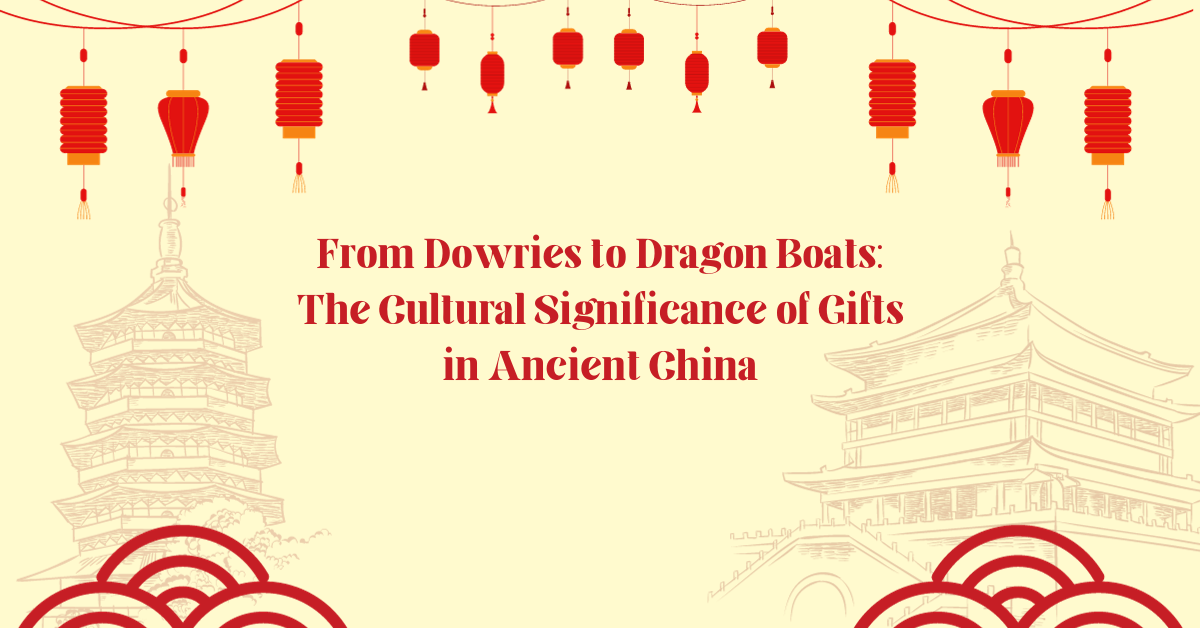Gift-giving in ancient China was deeply intertwined with the concept of “li 礼”, a term that encapsulates ritual, favor, folkways, institution, and social norms. This concept was central to ancient Chinese culture and was directly reflected in the term for gift, “liwu 礼物”, which combines “li” and “wu 物” (meaning thing).
The Multifaceted Nature of Li
The diverse meanings of “li” endowed gifts with intricate symbolic and social connotations. Traditional Chinese society was characterized by a pattern of differentiated sequences, emphasizing favors, relationships (guanxi 关系), and obligations. These elements were all attributed to “li”. Ancient texts such as “Li Ji 礼记” (The Book of Rites), “Li Yi 礼仪” (Etiquettes), and “Zhou Li 周礼” (The Rites of Zhou) were foundational to Confucian thought and had a profound influence on ancient Chinese society. These texts highlighted ritual norms ranging from interpersonal interactions to diplomatic communications, with gifts playing a pivotal role.
Gifts as Symbols of Li
Gifts in ancient China were not merely material objects but were symbolic representations of “li”. They were used in various societal levels, from national rituals that upheld the monarchy’s power to everyday exchanges among common people. The Book of Rites states that reciprocity is essential in gift-giving, emphasizing the importance of mutual exchange in maintaining social norms and obligations.
Semiotic Rhetoric in Gift Studies
Gifts are more than just material objects; they carry meanings and are symbolic in nature. The semiotic study of gifts examines how gifts, as signs, convey meanings. In ancient China, the interplay between “li” (symbolic meaning) and “wu” (practical meaning) was crucial in understanding the semiotic significance of gifts. Gifts served as tie-signs, expressing meanings of relationships, whether between individuals, between humans and deities, or between nations.
Ritual and Non-Ritual Gifts
Gifts in ancient China were categorized into ritual and non-ritual types. Ritual gifts were associated with ceremonies, religious rites, and national events, while non-ritual gifts pertained to daily life and personal relationships. The semiotic rhetoric of these gifts was determined by their dominant figures of speech, which conveyed their sociocultural meanings.
The Symbolism of Wild Geese in Weddings
In ancient Chinese weddings, wild geese were symbolic gifts representing loyalty and faithfulness in marriage. Their inclusion in wedding rituals was a testament to their significance as symbols of enduring love and commitment.
Summary
Gift-giving in ancient China was intertwined with the multifaceted concept of “li”, emphasizing relationships, obligations, and rituals. Gifts, whether ritualistic or personal, carried deep symbolic meanings, with some, like wild geese in weddings, symbolizing enduring love and commitment.
Citations:
- Zhao, X., & Xue, C. (2023). Semiotic rhetoric of gift giving in ancient China. De Gruyter. Retrieved from De Gruyter
